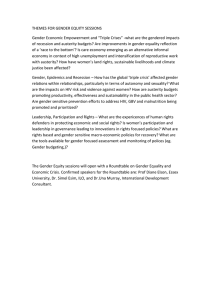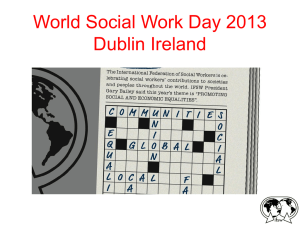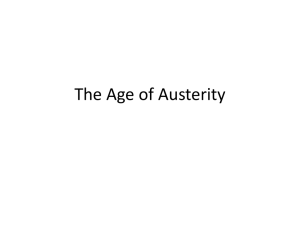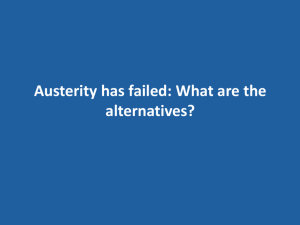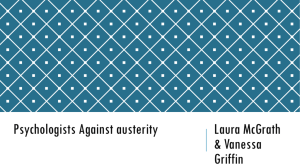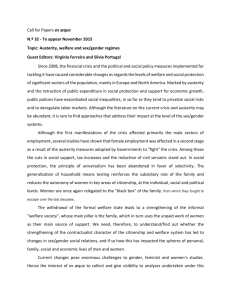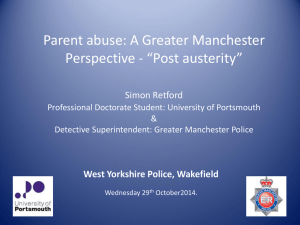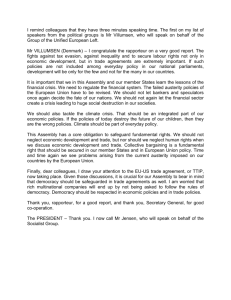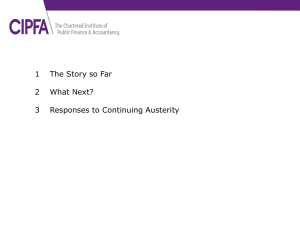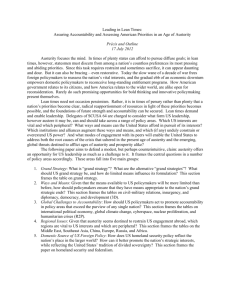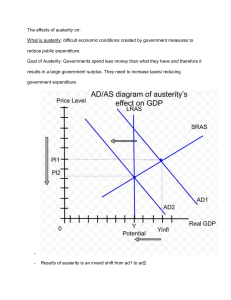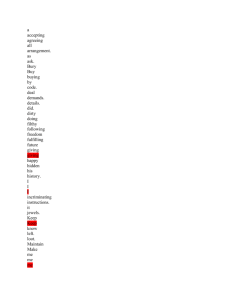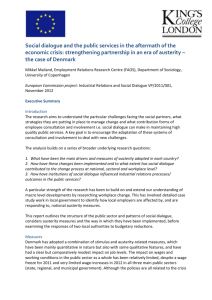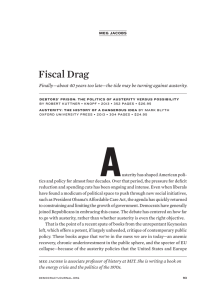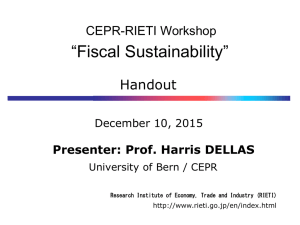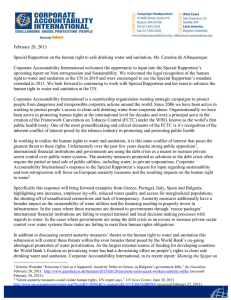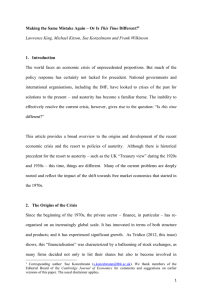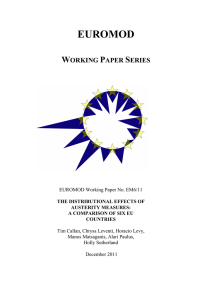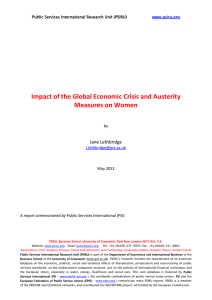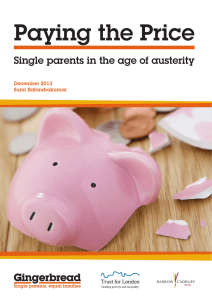Is The Economy*s Demise Our Neighborhood*s Rise
advertisement
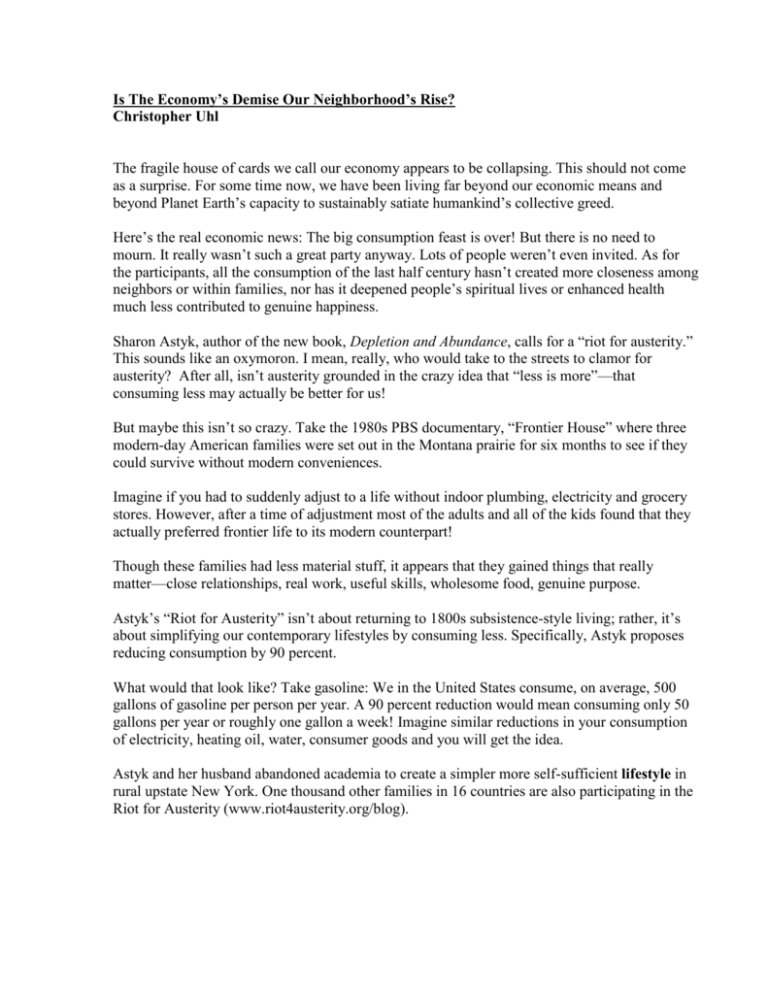
Is The Economy’s Demise Our Neighborhood’s Rise? Christopher Uhl The fragile house of cards we call our economy appears to be collapsing. This should not come as a surprise. For some time now, we have been living far beyond our economic means and beyond Planet Earth’s capacity to sustainably satiate humankind’s collective greed. Here’s the real economic news: The big consumption feast is over! But there is no need to mourn. It really wasn’t such a great party anyway. Lots of people weren’t even invited. As for the participants, all the consumption of the last half century hasn’t created more closeness among neighbors or within families, nor has it deepened people’s spiritual lives or enhanced health much less contributed to genuine happiness. Sharon Astyk, author of the new book, Depletion and Abundance, calls for a “riot for austerity.” This sounds like an oxymoron. I mean, really, who would take to the streets to clamor for austerity? After all, isn’t austerity grounded in the crazy idea that “less is more”—that consuming less may actually be better for us! But maybe this isn’t so crazy. Take the 1980s PBS documentary, “Frontier House” where three modern-day American families were set out in the Montana prairie for six months to see if they could survive without modern conveniences. Imagine if you had to suddenly adjust to a life without indoor plumbing, electricity and grocery stores. However, after a time of adjustment most of the adults and all of the kids found that they actually preferred frontier life to its modern counterpart! Though these families had less material stuff, it appears that they gained things that really matter—close relationships, real work, useful skills, wholesome food, genuine purpose. Astyk’s “Riot for Austerity” isn’t about returning to 1800s subsistence-style living; rather, it’s about simplifying our contemporary lifestyles by consuming less. Specifically, Astyk proposes reducing consumption by 90 percent. What would that look like? Take gasoline: We in the United States consume, on average, 500 gallons of gasoline per person per year. A 90 percent reduction would mean consuming only 50 gallons per year or roughly one gallon a week! Imagine similar reductions in your consumption of electricity, heating oil, water, consumer goods and you will get the idea. Astyk and her husband abandoned academia to create a simpler more self-sufficient lifestyle in rural upstate New York. One thousand other families in 16 countries are also participating in the Riot for Austerity (www.riot4austerity.org/blog). A movement toward austerity could bring joy, especially if it were rooted in neighborhood interdependence. For example, joy could come from sharing and trading with each other in our villages and towns. We could become curious about all the skills, gifts, and talents that the people living around us possess. This might then prompt us to ask the simple, yet radical, question, “What can we do for each other?” The answers to this question will be as diverse as we are—we can grow food, make bread, put food by, teach our kids to sew, sing and dance, provide household repair services to each other, give massage and other body-care treatments, offer childcare and eldercare, provide an attentive ear and on and on. In short, many of the important things of life that we use money for could be provided right in our own neighborhoods through simple hand-to-hand and heart-to-heart exchanges. In creating strong, informal neighborhood economies we can gain some measure of independence from the increasingly enfeebled formal economy. This is especially important when it comes to the far-flung food economy that we rely on for our daily bread. Consider that most of us have only a few days food supply in our homes. Meanwhile, the grocery stores are constantly being supplied with food shipped in from thousands of miles away. This is a precarious situation—one that is literally a threat to our very survival—especially in a teetering economy. We could, if we chose to, satisfy all our food needs, year-round, on a U.S.D.A.-quality diet, using the farm land available to us right here in Centre County. However, the reality is that less than 10 percent of what we actually consume is locally produced. Imagine how you would feel if you knew that RIGHT NOW all the food that all of us need for a healthy diet was actually being supplied RIGHT HERE in Centre County! Again, this is possible given our population and the amount of arable land available to us. Having this assurance, for me, would be the essence of genuine security—not relying on a far-flung food system in an unstable economy or waiting on a Social Security check that may never materialize. The resurgence of a regional food economy can begin right now in our homes and neighborhoods. Lots of our wonderful farmland has been transformed into all those lawns that surround our homes. Instead of growing grass we could be growing food in our yards. For example, I am discovering that it is possible to grow dozens of different food crops for eight months out of the year (April through November) in State College and in the process to significantly reduce my food bill. In other words, through the simple act of growing food at home it is possible to take a significant step away from the formal economy and into the informal economy—the one that offers us genuine security. Astyk reinforces this point: “…work within the home economy… puts our resources where they are most valuable—into our children and the food that keeps our bodies healthy, into [work] that serves our neighbors and our community, rather than [serving] people we have no relationship with. Thrift, repair, making things, growing things and nurturing things—that is good and honorable work, and we need to do more of it.”
